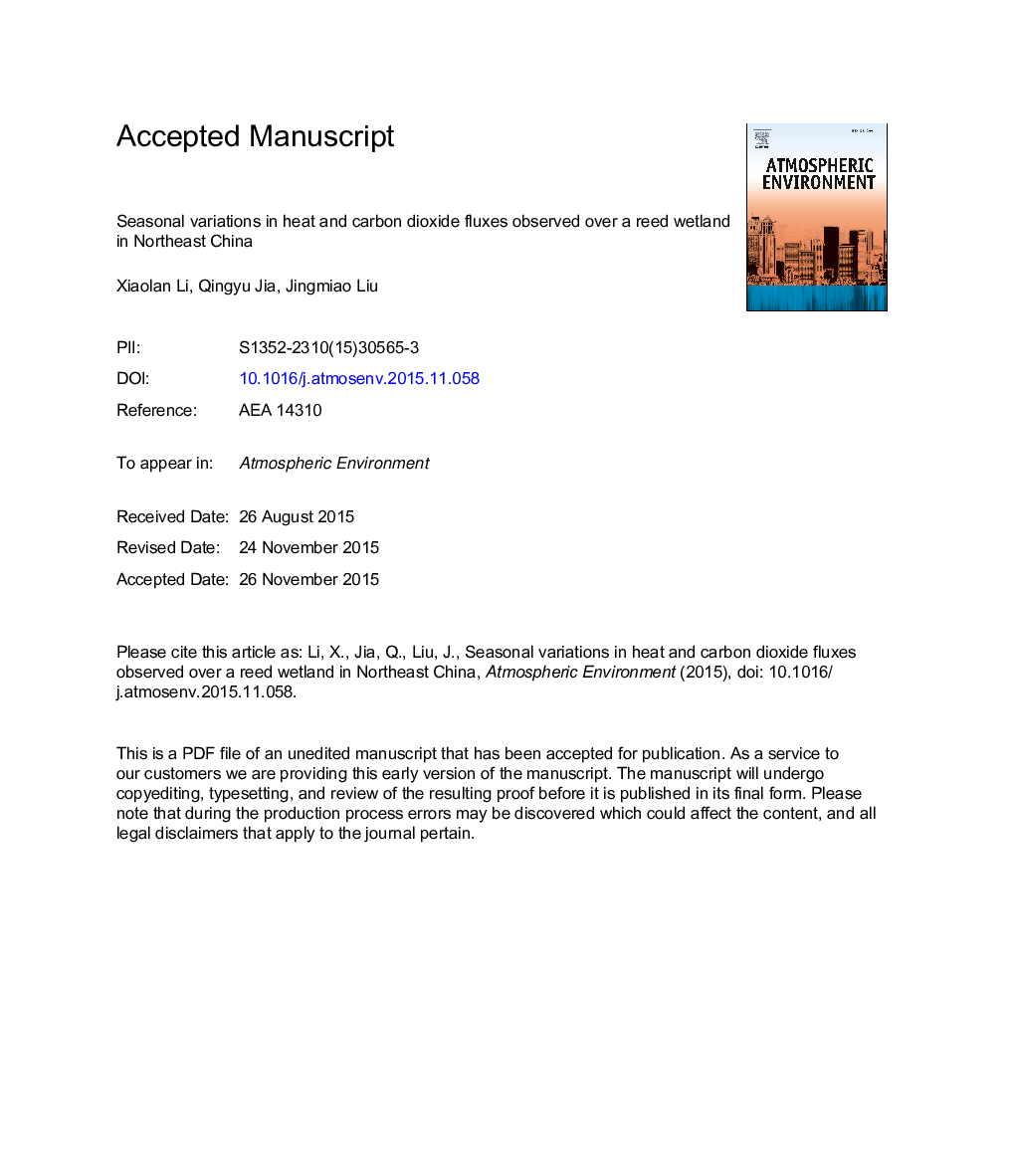| کد مقاله | کد نشریه | سال انتشار | مقاله انگلیسی | نسخه تمام متن |
|---|---|---|---|---|
| 6336855 | 1620347 | 2016 | 27 صفحه PDF | دانلود رایگان |
عنوان انگلیسی مقاله ISI
Seasonal variations in heat and carbon dioxide fluxes observed over a reed wetland in northeast China
ترجمه فارسی عنوان
تغییرات فصلی در گرما و دی اکسید کربن بیش از یک تالاب نئون در شمال شرقی چین مشاهده شده است
دانلود مقاله + سفارش ترجمه
دانلود مقاله ISI انگلیسی
رایگان برای ایرانیان
کلمات کلیدی
موضوعات مرتبط
مهندسی و علوم پایه
علوم زمین و سیارات
علم هواشناسی
چکیده انگلیسی
Seasonal variations in sensible heat flux (Hs), latent heat flux (LE), and CO2 flux (Fc) during 2006 over a reed wetland ecosystem in Northeast China, as well as their relationships with environmental factors, were investigated based on micrometeorological observations and turbulence data, measured using the eddy covariance technique. The results showed that the LE values were significantly larger (>400 W mâ2) in summer (June, July, and August) than those in other seasons because of the summertime abundant precipitation and strong evapotranspiration, whereas the Hs values were smaller (<100 W mâ2) in summer but larger in spring (>300 W mâ2) and autumn (>200 W mâ2). The cumulative evapotranspiration in 2006 was 577.1 mm that was mostly controlled by radiation at surface throughout the whole year but also limited by water supply during the non-growing season. Most of the Fc values ranged between â1.0 mg mâ2 sâ1 (sometimes close to â2.0 mg mâ2 sâ1) during daytime and 0.3 mg mâ2 sâ1 at night during the growing season (May to September) but varied around zero in the non-growing season, and the CO2 mass concentration was in the range of 600-800 mg mâ3. Monthly cumulative CO2 flux for the growing season was negatively largest in July (â520 mg mâ2 monthâ1) and smallest in May (â65 mg mâ2 monthâ1), making this reed wetland a net CO2 sink in 2006. The daytime CO2 flux in the growing season was positively correlated with atmospheric stability |z/L| under unstable condition, photosynthetically active radiation (PAR), and wind speed, but depended less on air temperature, relative humidity and soil water content on a several-day time scale. However, over a longer time scale, a comparison of March-April conditions during 2005 and 2006 suggested that cooler conditions can result in reduced CO2 production before the growing season.
ناشر
Database: Elsevier - ScienceDirect (ساینس دایرکت)
Journal: Atmospheric Environment - Volume 127, February 2016, Pages 6-13
Journal: Atmospheric Environment - Volume 127, February 2016, Pages 6-13
نویسندگان
Xiaolan Li, Qingyu Jia, Jingmiao Liu,
